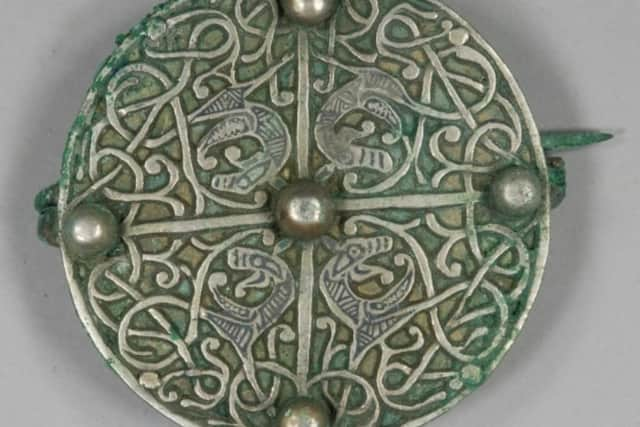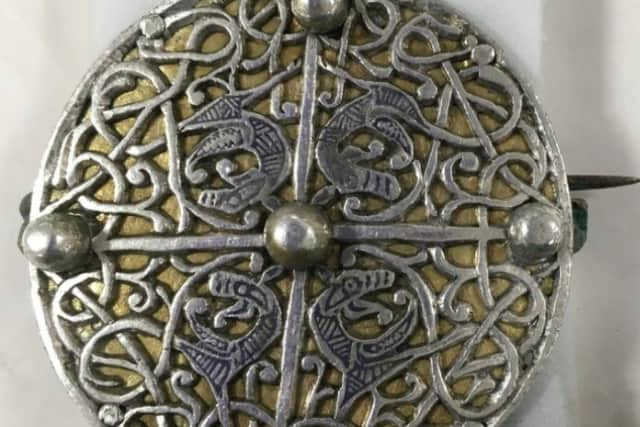Galloway Hoard: New rare treasure emerges from the dirt after 1,000 years
From the darkness it has emerged – and now stuns once again.
A silver Anglo-Saxon brooch concealed in the Galloway Hoard, which was found by a metal detectorist in 2014 at Balmaghie in Kirkcudbrightshire, is the latest piece from the collection to be conserved.
Advertisement
Hide AdAdvertisement
Hide AdIt is the smaller of two very similar pieces in the hoard, which overall contained five Anglo-Saxon disco brooches of a kind never found in Scotland before.


Bethan Bryan, assistant artefact conservator at National Museums Scotland, said it had been “a delight and privilege” to conserve one of the brooches from the Galloway Hoard with the chance to work on such a beautiful and historically important object a “dream come true”.
The brooch was among items found in a silver gilt vessel which was wrapped in woollen cloth and buried at the beginning of the 10th Century. More than 100 pieces in total were discovered with the collection described as the richest collection of rare and unique Viking-age objects ever found in Britain or Ireland.
NMS said the items had the ability to “transport us back to a critical moment in history: the formation of the political entities we now know as Scotland, England and Ireland, in a time of viking raids”.
Conservation work continues to build up a picture of why the hoard was perhaps buried where it was, and my whom.


According to the Norse sagas, wealth was deliberately buried in the ground so that it could be accessed in the afterlife with treasures also deposited to seal an oath, or to claim land. Sanctuary may have been sought for possession at a religious centre, with the land where the Galloway Hoard was found now owned by the Church of Scotland.
The front of the brooch is decorated with a vine, a central cross and four open-mouthed beasts’ heads, each adorned with niello, a black metal alloy of sulphur. The design also carries five spherical bosses.
A similar brooch was found in the Pentney Hoard from Norfolk, which was possibly buried in the 840s during the first Viking raids on East Anglia.
Advertisement
Hide AdAdvertisement
Hide AdMs Bryan said the way the brooch had been made offered a “human connection” with the maker with the cut marks of the tools leaving a trace of the hands who crafted it.
“The decorated front has been cut by hand. Imperfections can allow us to feel a human connection with the maker; tool cut marks are visible in places on the silver, and the vines are irregular in shape and size,” she added.
Heavy, “bumpy” corrosion on the back of the brooch, which carried a copper-alloy plate, was painstakingly removed under the microscope using a scalpel with a porcupine quill
porcupine quill tip used on the gilt surface of the back plate.
“The porcupine quill was strong enough to manually remove the copper corrosion spots, but soft enough not to scratch the soft and thin layer of gold,” Ms Bryan added.
The brooch is now ready for display.
Comments
Want to join the conversation? Please or to comment on this article.